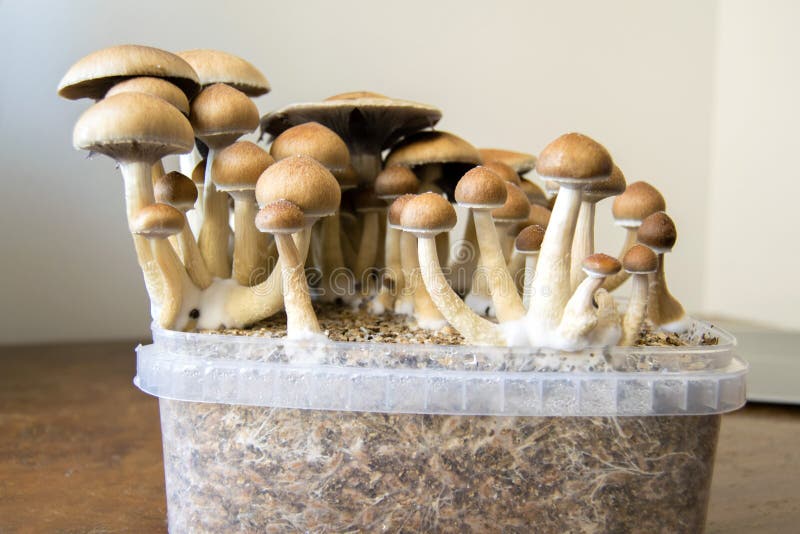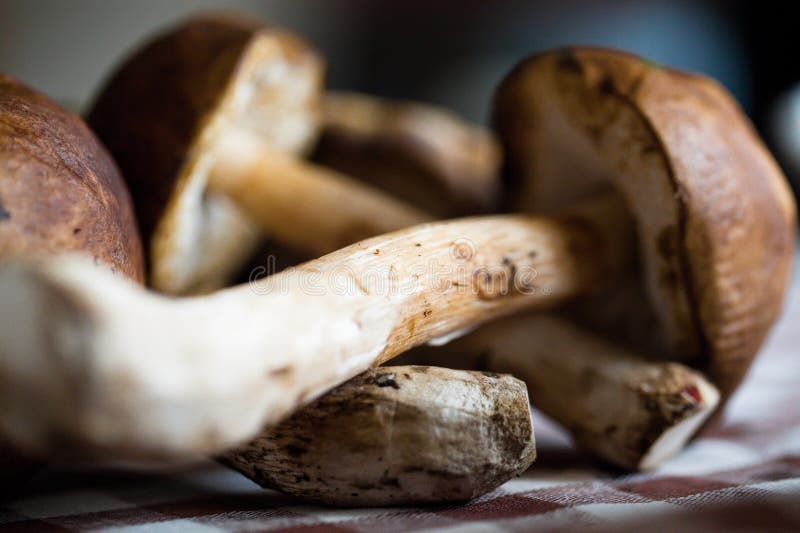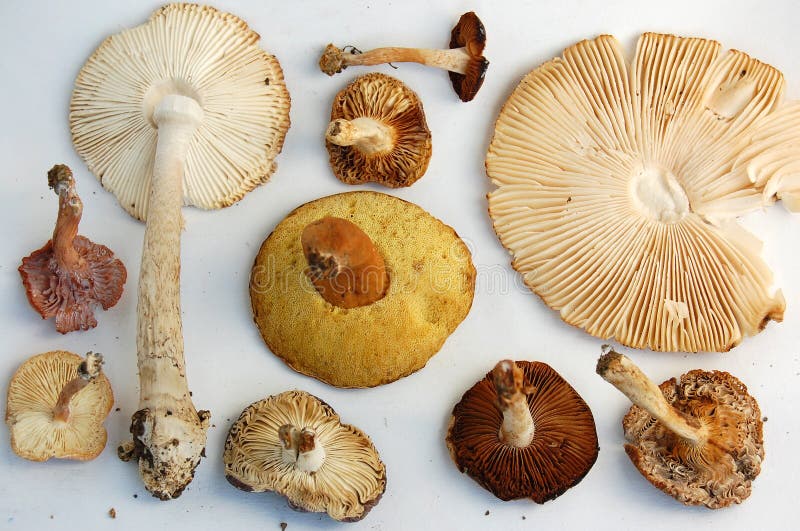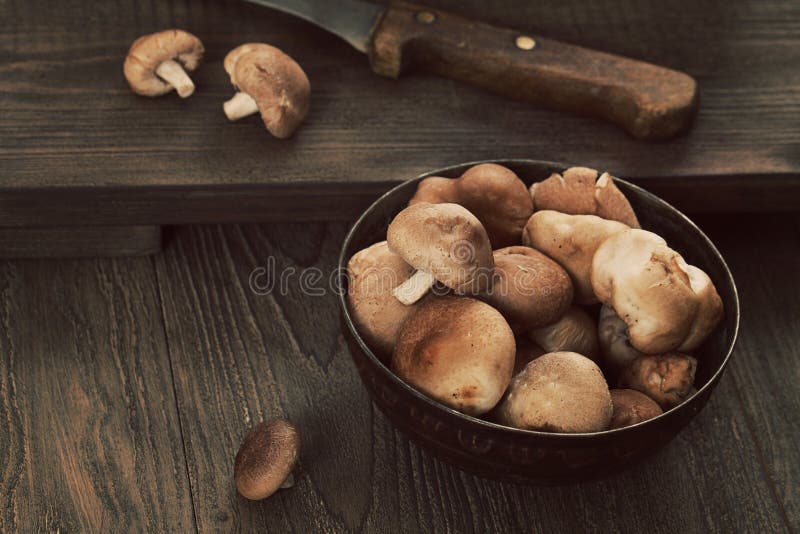Vegan Globetrotter is supported by our audience. When you purchase through one of our links, we may earn a small affiliate commission. As an Amazon Associate I earn from qualifying purchases. Your cost is not affected.
==================
Different Types of Mushrooms, Quick and Essential Guide
Every year during September, we celebrate an essential fungus, the mushroom or shrooms. This small but flavorful ingredient adds an amazing kick to whatever dish you include it in. In this article, we discuss various topics related to mushroom breeds; First, we look at the different types of mushrooms. Next, we discuss the common types of shrooms. Consider adding these often to your meals. Lastly, I’ll introduce you to some unusual types of mushrooms. Indeed, these altogether show the significance of National Mushroom Month.

What are Mushrooms?
We classify Mushrooms as a fungus, which is biologically different from both plants and animals. Gourmet mushroom types, in particular, provide useful food nowadays. These flavorful fungi offer a good combination of amino acid, low calorie, carbohydrate, fat, and salt content. Mushrooms also offer antimicrobial, immune-boosting, and cholesterol-lowering properties. Many different types of gourmet mushrooms exist. Soups, sandwiches, wraps, casseroles, and Italian meals all benefit from each one of them.
For vegetarians, cremini mushrooms and oriental mushrooms, including versatile portobello mushrooms, are essential ingredients in various dishes such as mushroom stir fry, acting as either side dishes or main meals. Incorporating soy sauce and sesame oil into these mushroom recipes enhances their rich flavors. Mushrooms not only serve as delicious food but also offer skin benefits. Reishi and shiitake mushrooms, when consumed, enhance the body’s natural immunities, reducing skin sensitivity and boosting resistance to environmental irritants.
History of Mushrooms
4600 years ago, people believed mushrooms existed as unique and otherworldly entities in origin. Now we know that our world contains a multitude of different types of mushrooms. Originally, Egyptians considered mushrooms as eternal plants. Only the Pharaohs were allowed to eat mushrooms. Romans considered some mushrooms as the food of the gods. Some unusual kinds of mushrooms, prized in China, show quite beneficial for both their culinary and medicinal qualities. Mushrooms were utilized in cooking by ancient Romans and Greeks, especially the higher classes. According to recent research headed by Steeve Bonneville of the Université libre de Bruxelles, the first mushrooms appeared on Earth between 715 and 810 million years ago. They appeared 300 million years before scientists previously thought.
The study of genetic connections between species and creatures is now feasible because advances in contemporary technology led to a new way of looking at relationships between forms of life. Animals and fungus, it turns out, share a similar ancestor and split from plants about 1.1 billion years ago, according to a study. Animals and fungus separated later on the evolutionary tree of life, with fungi being more closely linked to humans than plants.
Different Types of Mushrooms with Many Benefits
In any case, we now know of different types of mushrooms. Scientists believe that more varieties remain undiscovered.
These interesting different kind of fungus offers good nutritional benefits, too. We know that mushrooms, including different types of mushrooms, contain high-fiber, protein, and antioxidant-rich benefits. Additionally, they offer all this in low-calorie food. They also help reduce the chance of severe health problems, including Alzheimer’s, heart disease, cancer, and diabetes. Although we consider mushrooms as vegetables, they technically classify as members of the fungus kingdom, not plants. Mushrooms include the B vitamins riboflavin and niacin, which are particularly essential for vegetarians. The majority of mushrooms are also high in selenium and potassium.

Mushroom Names With Pictures
Different Types of Mushrooms
Saprotrophic, mycorrhizal, parasitic, endophytic, and lawn mushrooms are the four general types of mushrooms. While these categories include a wide variety of mushrooms, not all of them are edible. If you ever attempt to collect mushrooms outdoors, be cautious since some are toxic or hallucinogenic. Lawn mushrooms, specifically those found in lawns or grassy areas, can be a common sight. It’s important to note that identifying mushrooms accurately is crucial before considering them for consumption.
Fungi that are saprotrophic get their nourishment from non-living organic matter. In most settings, the significance of fungal saprotrophs cannot be overstated. The hyphae are responsible for absorbing nutrients from the environment and transporting them to other sections of the fungus. On the other hand, Saprotrophic fungi use their hyphae to forcefully penetrate most solid objects and their extracellular enzymes, which they subsequently break down.
Fungi and bacteria are the most common saprophytes.
These saprophytes survive and feed on decomposed organic matter to sustain their development. Mucor and yeast are two examples.
Beneficial Fungi
Among the different types of mushrooms, mycorrhizal fungi are the ones that establish healthy relationships with a wide range of wild plants, most often trees. The hyphae wrap around the roots of plants and absorb part of the sugar produced by photosynthesis. In return, the fungus supplies water and hard-to-come-by nutrients like phosphorus to the tree.
Edible mycorrhizal fungus, including cultivated mushrooms, is the most highly sought gourmet mushroom on the planet. Truffles, chanterelles, matsutake mushrooms, porcini (boletes), and morels are all included in this category. Because of their complicated life cycles, all of these cultivated mushrooms are difficult to cultivate artificially.
Some Fungi live as parasites
Parasitic fungi assault live creatures, breach their outer defenses, infiltrate them, and feed on their cytoplasm, causing illness and, in some cases, death. Plant-parasitic fungus, such as Endothia parasitica, Ceratocystis ulmi, Puccinia sparganioides, and Puccinia graminis. In contrast, fungi of the genera Aspergillus or Candida albicans infect humans.
Harmless Fungi
Finally, endophytic fungi live in plant tissues without damaging or generating chemicals that cause the host cell to become infected. They may be found in large quantities within the healthy tissues of live plants. They play an essential role in plant micro-ecosystems. Some co-existing endophytes and their host plants have developed a unique connection through time, which may significantly impact the production of metabolic products in plants and the quality and amount of crude medicines produced from medicinal plants.
One or more endophytic fungus species live on each plant type. Endophytic fungi are a broad polyphyletic collection of microorganisms that may live asymptomatically in many healthy tissues of living plants, including stems, leaves, and roots, above or below ground.
Common Types of Mushrooms and their Uses
White Button Mushroom
White button mushrooms are one of the common types of Australian mushrooms. In fact, they are the most common type of mushroom in the world. This edible fungus traces its roots back to the grasslands of North America and Europe. These australian species are selected as white spherical, button-shaped mushrooms when they are not completely developed. They are known as Crimini, Bella, or Baby Bella and later on as portobello mushrooms.
Scientific Name: Agaricus bisporus
Health Benefits – A 90gram serving of white button mushrooms contains vitamin D. This type of mushroom also has many bioactive components that provide health benefits.
Shiitake Mushrooms
From the different types of mushrooms, the shiitake mushrooms are common edible mushrooms used in East Asian countries. Typically grown in Japan, but Canada and the United States also produce them. Shiitake mushrooms can be added to any
Scientific Name: Lentinula edodes
Health Benefits – Shiitake mushrooms are rich in natural copper, a mineral that promotes healthy blood vessels, bones, and immunological function.
Chanterelle (girolle) mushrooms
Many people consider this the most popular edible wild mushroom. With a meaty texture and funnel-shape, they grow in a range of colors hues including orange, yellow, or white. Chanterelle, a natural fungus, has not been successfully reproduced in a lab. The stem of the Chanterelle combines into a funnel-shaped crown. The hue ranges from light to dark yellow.
Scientific Name: Cantharellus cibarius
Health Benefits – Polysaccharides like chitin and chitosan are abundant in chanterelle mushrooms. These two chemicals work together to protect your cells from harm while encouraging your immune system to create additional cells. They’re also known to aid in the reduction of inflammation and the prevention of some malignancies.
Oyster mushrooms
In India, they are common types of mushrooms called ‘dhingri,’ and they grow naturally in temperate and tropical forests on dead and rotting wooden logs. It’s also possible that it’ll grow on decomposing organic materials. Depending on the species, the fruit bodies of this mushroom are distinctively shell or spatula-shaped and come in various colors of white, cream, grey, yellow, pink, or light brown.
Scientific Name: Pleurotus ostreatus
Health Benefits – Oyster mushrooms are nutrient-dense. Dietary fiber, vitamins, minerals, and other essential elements abound in oyster mushrooms. They can easily become indispensable in the daily diet because they are high in protein, non starchy carbs, cholesterol-free, and contain little fat.
Maitake Mushrooms
The maitake mushroom is a light brown edible fungus that grows in feathery clusters at the foot of trees. It is endemic to North America, Europe, and China and is also known as the hen of the woods mushroom.
Scientific Name: Grifola frondosa
Health Benefits – Among the different types of mushrooms, chemicals found in maitake mushrooms may help fight cancer cells and boost the immune system. The maitake mushroom is a popular delicacy in Asia, and it’s also used in traditional medicine to treat diabetes and hypertension.
Enoki Mushrooms
Enoki mushrooms are white and have long, thin stems and tiny, bulbous caps. They are also known as golden needle mushroom or enokitake, which simply translates “enoki mushroom” in Japanese. Enokis are more than merely delicious mushrooms. It has nutrition and therapeutic properties that make them medicinal mushrooms.
Scientific Name: Flammulina velutipes
Health Benefits – Niacin, calcium, iron, potassium, and riboflavin are among the vitamins and minerals present in enoki. For a long time, enoki mushrooms have been used to treat high cholesterol, high blood pressure, liver illness, and stomach problems.
Beech / Shimeji Mushrooms
Beech/Shimeji mushrooms are gilled mushrooms that grow on wood in nature. The fungus is most often seen on beech trees, hence the popular name beech mushroom.
Scientific Name: Hypsizygus tessellatus
Health Benefits – Beech mushroom stems and caps are edible, but the base from which they grow is not. Once the mushrooms have been removed from it, they should be thrown. For hot dishes, beech/Shimeji mushrooms are also a must-have component! They’re low in fat and rich in dietary fiber, and they’re high in protein, zinc, B vitamins, copper, and other nutrients.
King Trumpet Mushrooms
King Trumpet mushrooms are also known as the Royal Trumpet mushroom, king oyster mushrooms , Cardoncello, Eryngii, French Horn and King Trumpet. They are unusual in that they can survive in harsh environments such as a scorching desert or a humid climate. The strong cylindrical stem and tiny, flattened cap distinguish King Trumpet mushrooms, ranging in size from medium to big.
Scientific Name: Pleurotus eryngii
Health Benefits – These common types of mushrooms are potent superfoods that have been proven to assist with weight loss and cholesterol reduction. Breast cancer and prostate cancer risk have both been related to them. Furthermore, king trumpet mushroom extracts have been found to have antiviral effects. They are also known to promote bone health.
Black Trumpet Mushrooms
Horn of Plenty, black Chanterelle, black trumpet, trompette de la mort (French), trombetta dei morti (Italian), or trumpet of the dead are all names for black trumpet mushrooms. The fruiting body is not divided into stalk and cap but rather resembles a funnel with a wide opening at the top. The mushroom is nearly black and difficult to see since it mixes in with the leaf litter on the forest floor.
Scientific Name: Craterellus cornucopioides
Health Benefits – Black Trumpet Mushrooms, like other mushrooms, offer a number of health advantages, including being rich in Vitamin B12, which is good for the skin, cancer prevention, weight loss, and cholesterol reduction. It also contains antioxidants and aids in the maintenance of the normal brain and nervous system functioning.
Hedgehog Mushrooms
Hedgehog mushrooms with flat caps range in size from tiny to big. They may have an uneven form with a flattened, depressed crown and a slender, off-centered stem. Hedgehog mushrooms are also known as Sweet Tooth mushrooms, which refers to their taste and form. Other names for Hedgehog mushrooms are Pig’s Trotter, Wood Urchin, and the Wood Hedgehog. They have a crisp texture and a sweet, nutty flavor. It’s been compared to the Chanterelle in the culinary world.
Scientific Name: Hydnum repandum
Health Benefits – The primary advantage of eating a hedgehog is that it is nutritious. Vitamin D, potassium, iron, and anti-inflammatory and antibacterial qualities are all found in hedgehog mushrooms. The mushroom is low in fat and calories, high in protein, and high in various vitamins and minerals.
Morel Mushrooms
Because of their richness and earthy, nutty taste, morels are regarded highly. They also have a meaty feel, unlike other mushroom species, which are oily. Morel, common morel, genuine morel, morel mushroom, yellow morel, sponge morel, Molly Moocher, haystack, and dryland fish are some of its common names.
Scientific Name: Morchella esculenta
Health Benefits – Among the different types of mushrooms, morels have been used more frequently in traditional medicine for centuries because of their health advantages. A recent study has shown that they contain anti-oxidative and anti-inflammatory properties. They help alleviate digestive issues. They are also fantastic energy sources and suitable for diet and muscle development
Porcini Mushrooms
Porcini mushrooms were formerly known as ‘small pigs’ by the ancient Romans. In French, they’re called ceps or cèpes, and in English, penny buns. They’re trendy in Italian cuisine. This common mushroom identification has a unique flavor that some people equate to sourdough bread, with tastes that are somewhat creamy and nutty. Fresh or canned porcini mushrooms are available, although dried porcini mushrooms are the most frequent.
Scientific Name: Boletus edulis
Health Benefits – B vitamins, protein, copper, potassium, zinc, and selenium, are all abundant in porcini mushrooms. All of the minerals are necessary for a balanced diet. Porcini mushrooms are high in dietary fiber and have a low saturated and unsaturated fat content. Dietary fiber aids digestion and alleviates constipation issues.
Reishi Mushrooms
The Reishi mushroom, also known as “lingzhi,” has been used in Traditional Chinese Medicine (TCM) for thousands of years because it has anti-ageing effects, enhances memory and vitality, and decreases stress. Reishi has a different flavor than the mushrooms you eat— it’s earthy but more bitter and raw. Although you may dissolve some reishi powder in hot water, this method may be difficult to stomach. Instead, try combining it with other flavors in tea or hot cocoa before bed.
Scientific Name: Ganoderma lucidum
Health Benefits – In Asian traditional medicine, the reishi mushroom strengthens the immune system, decreases stress, promotes sleep, and reduces tiredness. Reishi mushroom is also used to treat health issues such as high blood pressure. Cholesterol levels are high.
Unusual Types of Mushrooms
Chicken of the Woods Mushrooms
Because of its lemony, meaty flavor, Chicken of the woods is also known as sulphur shelf, Chicken of the woods, chicken mushroom, or chicken fungus. Some people think it tastes like Chicken, while others think it tastes like crab or lobster. This lovely orange mushroom grows in bunches along the sides of trees—deep orange in the center with a softer orange hue around the borders.
Scientific Name: Laetiporus sulphureus,
Health Benefits – Among the different types of mushrooms, Chicken of the woods mushrooms is among the best vegetarian alternatives. It is a tasty vegetarian chicken alternative and a low-calorie, low-fat, high-protein meal. Potassium, vitamin C, fiber, and vitamin A are all found in Chicken of the Woods mushrooms, which are also thought to have antifungal and antibacterial effects. Antioxidant chemicals are also abundant in Chicken of the woods. It’s also high in lanostanoids, which are chemicals that have been proven to stop malignant tumors from growing.
Wood Blewit Mushrooms
Wood blewit mushrooms are unusual types of mushrooms. They are known as delicious gourmet mushrooms that may be discovered between November and February when there aren’t many other mushrooms around. During the fall and winter, they may be found under leaf litter in deciduous and mixed woods and beneath hedgerows. Blewits have a decent flavor—a very typical mushroom flavor—but their texture may be a bit slick.
When young, Wood Blewits are blue. The caps, gills, and stems are violet in hue. However, the cap surface quickly loses its blue or violet coloring and becomes ochre or brown from the center. However, even when completely grown, the gills and stem maintain part of their violaceous coloration.
Scientific Name: Lepista nuda
Health Benefits – A 90gram serving of white button mushrooms contains vitamin D. This type of mushroom also has many bioactive components that provide health benefits.
Giant Puffball Mushrooms
The giant puffball mushroom (Calvatia gigantea) is a substantial, white, spherical mushroom found in temperate regions across the globe. While it is the world’s largest mushroom, it’s important to note that the giant puffball is not a native species in all areas. It can reach diameters of up to 2 feet and carry weights of as much as 20 pounds.
Scientific Name: Calvatia gigantea
Health Benefits – Giant puffballs provide a rich reservoir of nutrients, encompassing potassium, vitamin C, and vitamin B1. These mushrooms are additionally known for their low calorie and fat content. Their versatility shines through as giant puffballs can be consumed fresh, cooked, or dehydrated. Their culinary applications span a spectrum of dishes, from soups and stews to stir-fries, offering a diverse range of dining possibilities.
Lion’s Mane Mushrooms
Lion’s mane mushrooms are described as white, globe-shaped fungi that have lengthy, hairy spines. They usually grow as shaggy clumps on the side of trees. The lion’s mane, unlike other therapeutic mushrooms, is an edible mushroom. It has the texture of stringy flesh and a sweet, savory taste similar to lobster or crab meat.
Scientific Name: Hericium erinaceus
Health Benefits – Lion’s mane may either be eaten or taken as a supplement. It improves attention and mood, preserves the brain in tip-top shape, strengthens the immune system, and reduces inflammation. In a randomized sample of 15 older people, lion’s mane significantly enhanced cognitive performance, according to a 2008 research trial.
Matsutake Mushrooms
Matsutake mushrooms are part of the unusual types of mushrooms. They grow under trees and are typically hidden behind litter on the forest floor. They establish a symbiotic connection with different tree roots. Matsutake mushrooms are a renowned autumn delicacy in Japan and are adored by fine diners.
They are also one of the most costly mushrooms on the planet. People often use adjectives like “spicy” or “cinnamon” to describe their taste. They have a strong flavor that may overwhelm other mushrooms or components in a recipe.
Scientific Name: Tricholoma matsutake
Health Benefits – B vitamins, protein, copper, potassium, zinc, and selenium, are all found in abundance in matsutake mushrooms – all of the minerals necessary for a balanced diet. Mushrooms also have high dietary fiber content and are low in saturated and unsaturated fat. Dietary fiber aids digestion and alleviates constipation issues.
In Conclusion
Our world contains a wide variety of mushrooms, including both edible and poisonous ones. Common yard mushrooms, in particular, are often found in yards or gardens. I covered the most well-known edible mushrooms, but it’s crucial to be aware of poisonous mushrooms, like common yard mushrooms, to avoid accidentally consuming them. Understanding the differences between edible and toxic varieties is essential, especially if you’re exploring mushroom recipe and foraging for these delectable fungi.
Most of these common types of mushrooms, including fresh mushrooms, provide delicious flavors to your everyday meals. Some of them even grow nearby, perhaps in your backyard. However, there are also more exotic mushrooms out there, such as the fairy ring mushroom and ringless honey mushrooms, that can add interesting flavors to your dishes.
Of course, finding the unusual types of mushrooms often proves more challenging. However, specialty markets often carry them. Also, many online sources exist, too.
Indeed, with the health benefits and flavors that mushrooms provide, I think we need to include them in our everyday cooking. So, for this National Mushroom Month, I hope you consider adding or trying some, if not all, of the mushrooms on the list!
FAQS
What Are Fancy Name for Mushrooms?
Mushrooms are often adorned with various fanciful names that evoke a sense of culinary elegance and mystery. Some of these fancy names include “wild chanterelles,” “exotic morel mushrooms,” and “delicate enoki mushrooms.” These names add allure to these flavorful fungi and entice food enthusiasts to explore their unique tastes and textures in sophisticated dishes.
What Are Cute Mushroom Names?
Cute mushroom names often playfully reflect the charming appearance and whimsy of these fungi. Some cute mushroom names include “toadstool tots,” “fairy caps,” and “pixie shrooms.” These endearing names evoke a sense of enchantment and make mushrooms even more endearing to both children and adults alike.
Do Mushrooms Contain Msg?
Are There Any Vegetarian-friendly Parmesan Cheese Options for Mushroom Recipes?
Definitely! Many brands offer vegetarian-friendly Parmesan cheese alternatives that don’t contain animal rennet. Look for labels that indicate “vegetarian” or “microbial rennet” to ensure it aligns with your dietary preferences.
Is Rust Fungi a Mushroom?
Rust fungi are not mushrooms. Mushrooms are a type of fungus, but rust fungi are a different type of fungus. Mushrooms are classified in the phylum Basidiomycota, while rust fungi are classified in the phylum Pucciniomycotina.
What’s the Most Common Mushroom?
The most common mushroom worldwide is the Agaricus bisporus, commonly known as the white button mushroom, which is the base for all kinds of mushroom. It’s widely cultivated and accounts for a significant portion of the global mushroom production, including variations such as crimini mushrooms and portobello mushroom.
Can All Types of Mushrooms Be Eaten Raw?
Not all mushrooms are safe to eat raw. Some edible mushrooms can be consumed without cooking, but some of them are poisonous. It’s crucial to know the specific type you’re dealing with. Always research; you can use some mushroom books to learn about the different classifications of mushrooms and whether they can be safely eaten raw.
What Should I Do if I Suspect Mushroom Poisoning?
Seek medical help immediately, even if symptoms are mild. Don’t wait for symptoms to worsen.
How Do I Start Mushroom Foraging Safely?
Begin with easily identifiable species, learn from experienced foragers, and gradually expand your knowledge. You can use a mushroom identifier by picture to easily identify the mushroom.
What Types of Containers Can I Use for Mushroom Cultivation?
You can use plastic bags, jars, or even recycled containers. Just ensure they are sterilizable and have proper ventilation.
Read More:
Celebrate All Things Mushroom (USDA)





Don't miss out
when new recipes and information are added!
Join our newsletter for free recipes,
healthy living inspiration, and special offers
You have Successfully Subscribed!